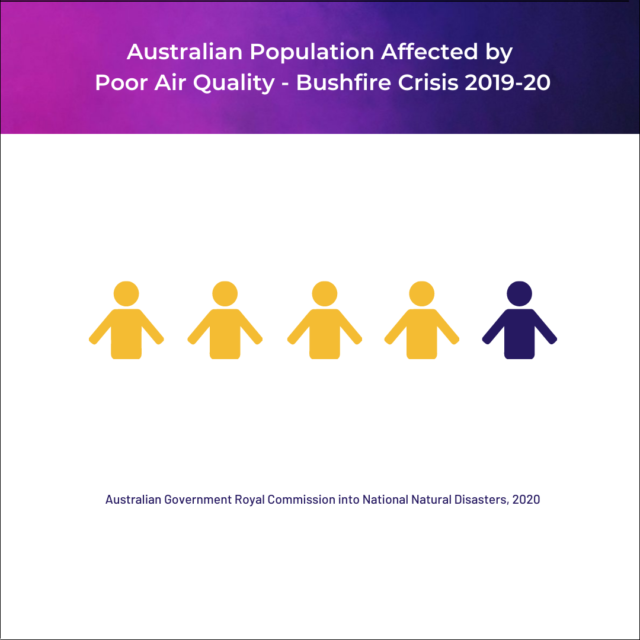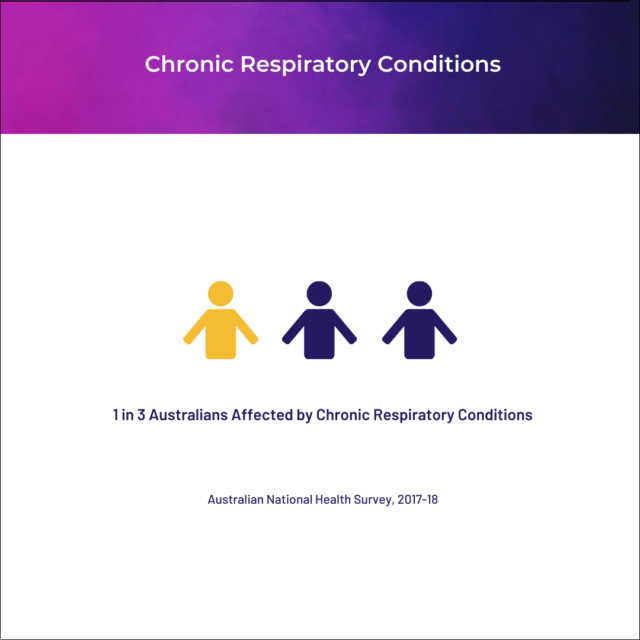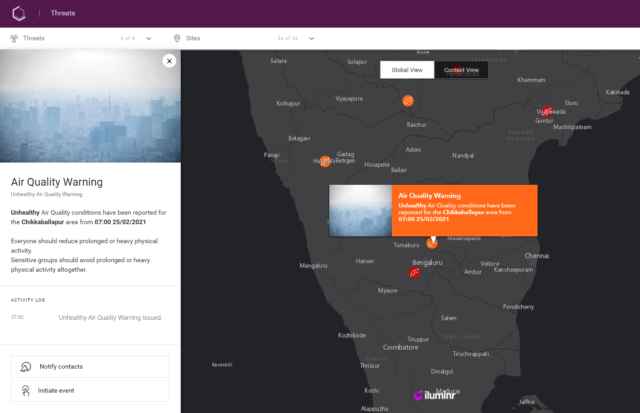Blanketing homes, cars, and clothes with the residue of burning bushland, the Australian Bushfire Crisis pushed the Air Quality Index (AQI) 12 times above Hazardous levels in Sydney, New South Wales.

In the aftermath of one of the world’s worst natural disasters, the Australian Government Royal Commission into National Natural Disasters reported that up to 80% of Australia’s population was affected by smoke exposure during the event.
With significant increases in hospitalizations due to heart attacks and youth respiratory conditions in the first five weeks after the fires began, the American 2020-21 Wildfire Crisis further underscored the effects of poor air quality and bushfire smoke.
With COVID-19 leading to unprecedented early deaths and the ongoing effects of climate change resulting in hazardous air pollution levels worldwide, it has never been more important for Work Health and Safety professionals to consider how they can better manage and meet the needs of their team’s health.
With one 2017-18 Australian National Health Survey unveiling that one-third of all Australians self-report chronic respiratory conditions and Chronic Lower Respiratory Diseases being the fourth leading cause of death in the United States, the time to implement an air quality index mapping system and mitigate the risks of climate-related events is today.
Waiting for authorities to mandate specific Work Health and Safety actions to keep your people safe may leave your team exposed. Much like physical climate-related events, critical event management teams can proactively monitor for hazardous air quality levels using a digital AQI map.
Air Quality Index and Rankings
The Air Quality Index is a metric by which state-based and national governing authorities can measure the level of harmful pollutants that can impact human health. By accurately recording the level of potential air-borne hazards, monitoring teams can help design air quality management strategies and evaluate the activities contributing to, or reducing levels of, active air pollution.
Tracking and Responding to Hazardous Events

One way that organization’s track hazardous air quality levels is through Air Quality Index mapping. Having pinned key asset, office, and warehouse locations for each organizational site, an active threat monitoring system, like iluminr, your team can monitor air quality events and warn key decision makers in the face of escalating AQ levels.
To protect your most valuable assets (your team!) when air quality hazards are high, the following steps can assist in being better prepared during business-as-usual periods and actioned during a critical climate-related event.
1. Map Asset Locations: Using an active alert threat monitoring system, map your organizational asset locations from people, to projects, and places. Are your staffing offices in the city? Drop a marker there. Is your commercial build site in a regional zone? Drop a second pin there. Severe weather warnings will be monitored according to each location.
2. Establish Your Risk Threshold: To plan for potential threats without tying up your key personnel, create a table identifying risk thresholds for air quality levels suitable to your risk tolerance. Instead of requiring ongoing, manual monitoring, an active alert threat monitoring system can watch for potential escalating threats and alert your key decision makers in the face of an emergency.

3. Create Stakeholder Communication Channels: Anticipate the need to collaborate during a critical event? iluminr delivers prepared workflows and opens collaborative breakout rooms to support a whole team response during an escalating event. With an online, accessible space to discuss and keep record of actions taken, two-way communication functions can keep team leaders connected with decision makers and help distributed teams navigate the threat.
4. Deliver Your First Response Plans: In the face of a plummeting AQI, take a people first approach and deliver automated messages to your team right away. With a built-in, mass communication delivery system ready to be activated with the click of a button, iluminr can tell on-site workers to evacuate and remote workers to stay home.
5. Micro-simulate a Response: If your risk thresholds for air quality hazards were met today, what would you do? By exercising regular micro-simulations with your team, you can gain clarity and familiarity with each consideration required to direct your people to safety and keep the organization moving forward.
—
Planning to ensure that your people are protected against climate-related events doesn’t have to be time consuming. The difference between successful event navigation and further fanning the flames is that successful critical event management teams know that preparation is key.
Interested in setting up an automated air quality index mapping system? iluminr, our active threat monitoring system, can undertake ongoing, silent monitoring for potential climate-related events and alert you to hazardous air pollution levels. All registered users gain free access to industry-expert panels discussing the importance of critical event management and how to keep your team safe.
Get your Work Health and Safety plan automated today and breathe easy knowing that you’ve put your people first.
—
Sources
- Royal Commission into National Natural Disaster Arrangements Report, 2020
- Australian Institute of Health and Welfare, 2020
- CDC, 2018
- NOAA ESRL CSD, 2019-20
- EPA Victoria, 2021
- National Geographic, 2021
- The Guardian, 2021













